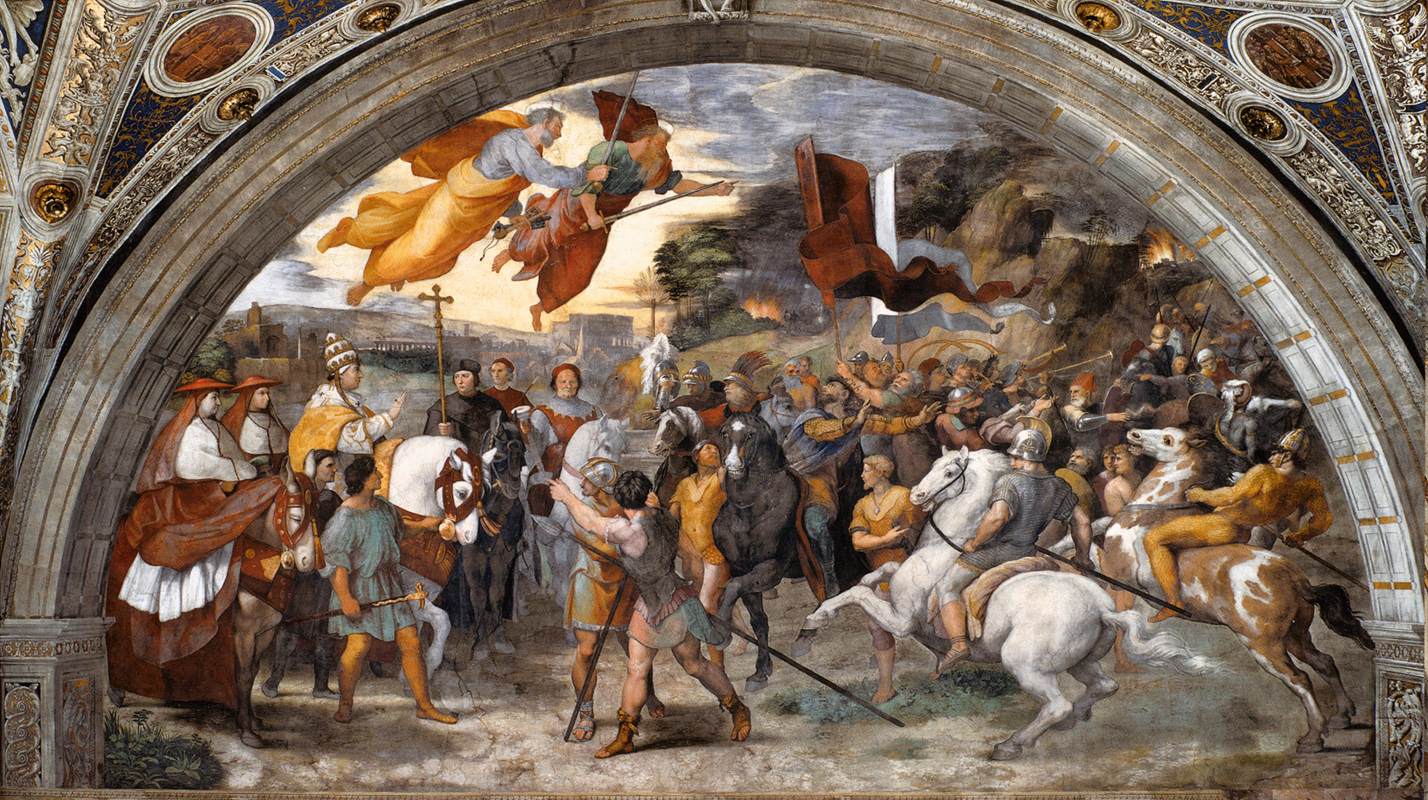Description
The painting "The Meeting between Leo the Great and Attila" by Raffaello Sanzio is a masterpiece of the Italian Renaissance that stands out for its impressive original size of 750 cm. This work is located in the room of the Four Colonels in the Vatican and represents an important historical moment in the history of Rome.
The composition of the painting is impressive, with a clear division into two parts. On the left is Attila, leader of the Huns, mounted on his horse and surrounded by his army. On the right is Pope Leo I the Great, accompanied by Saint Peter and other important figures of the Catholic Church.
The coloring of the painting is vibrant and striking, with golden and red tones that highlight the importance and majesty of the characters represented. Also, the light and shadows are perfectly balanced, giving the painting a three-dimensional look.
The story behind the painting is fascinating. According to legend, Attila was on his way to Rome with the intention of destroying it, but met Pope Leo I on the way. The Pope managed to convince Attila not to attack Rome, which saved the city from destruction.
A little known aspect of the painting is that it was created in a very short period of time, in just four days. Raffaello Sanzio was known for his ability to work quickly, but this is truly impressive.
As for the artistic style, "The Meeting between Leo the Great and Attila" is a perfect example of the Italian Renaissance, with its attention to detail, its balance and its symmetry. In addition, the painting shows the influence of ancient Greece and Rome, with the representation of the characters in classical and majestic poses.
In short, "The Meeting between Leo the Great and Attila" is a masterpiece of the Italian Renaissance that stands out for its impressive size, its composition and its colouring. Also, the story behind the painting is fascinating and its artistic style is a perfect example of the Italian Renaissance.

